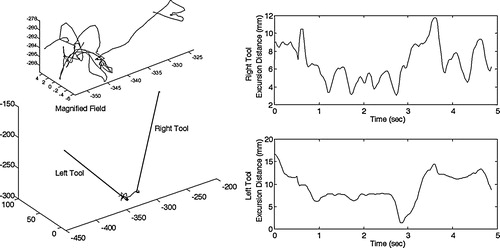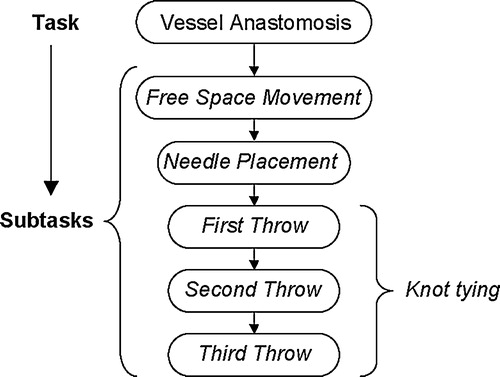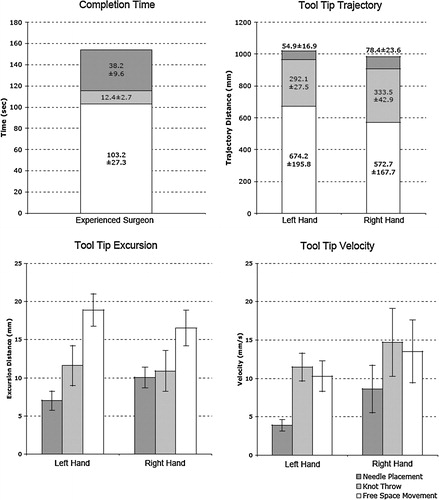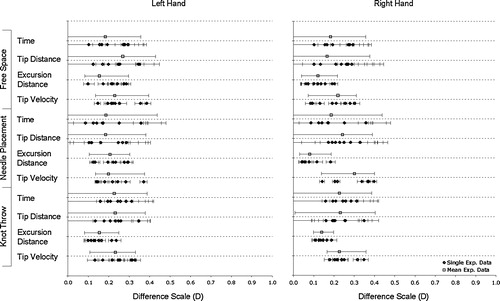Figures & data
Figure 1. Left: Standard microsurgical tools equipped with trackable marker arrays (during a rat microvascular anastomosis). Right: Marker array equipped with retro-reflective markers attached to forceps handle.
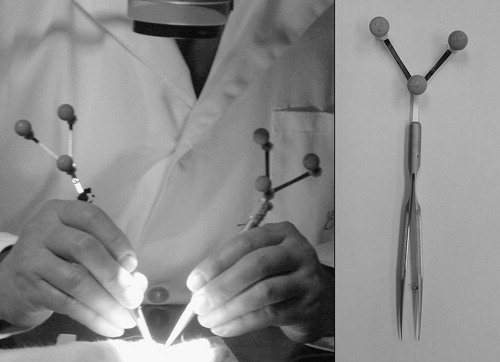
Table I. Kinematic performance measure definitions.
Figure 4. A: A comparison of CPD functions of any arbitrary performance measure using the K–S statistic. B: Bootstrapping approach based on resampling of two finite sets. C: Using the CPD of D from resampling to establish confidence bounds on D.
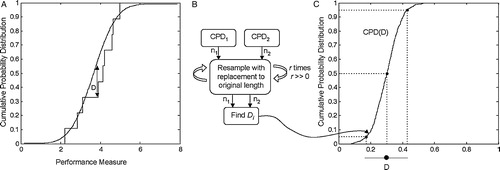
Table II. Summary of tool tracking and anastomosis results.
Figure 5. Sample of a three-dimensional tool tip trajectory (left) and a tool tip excursion profile (right) for a knot-throwing subtask.
